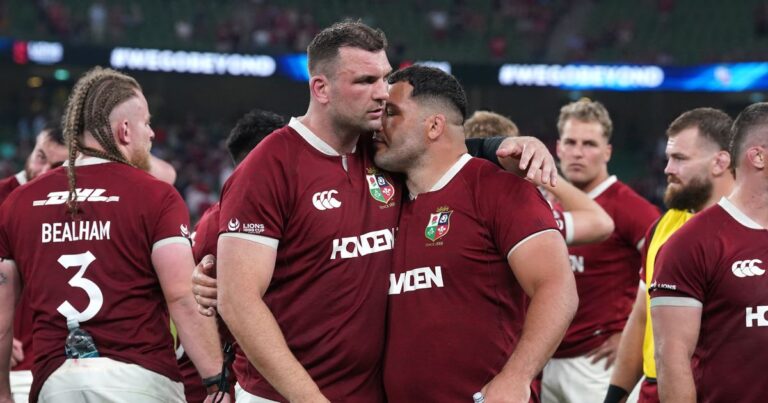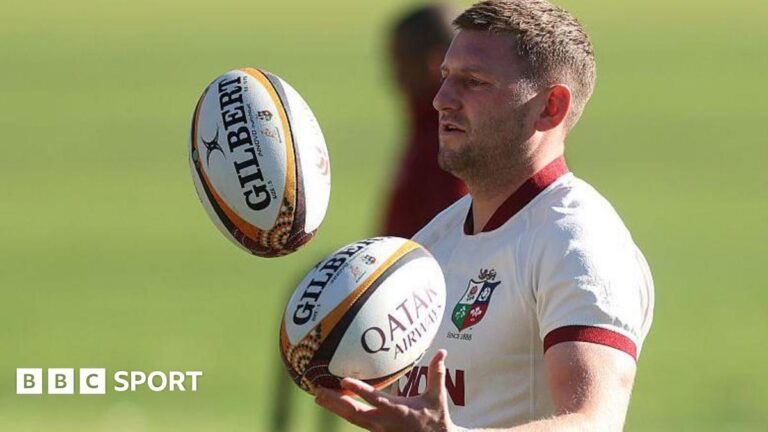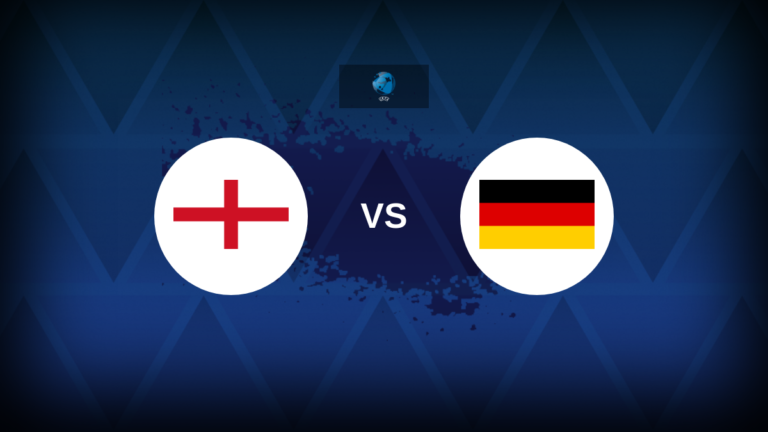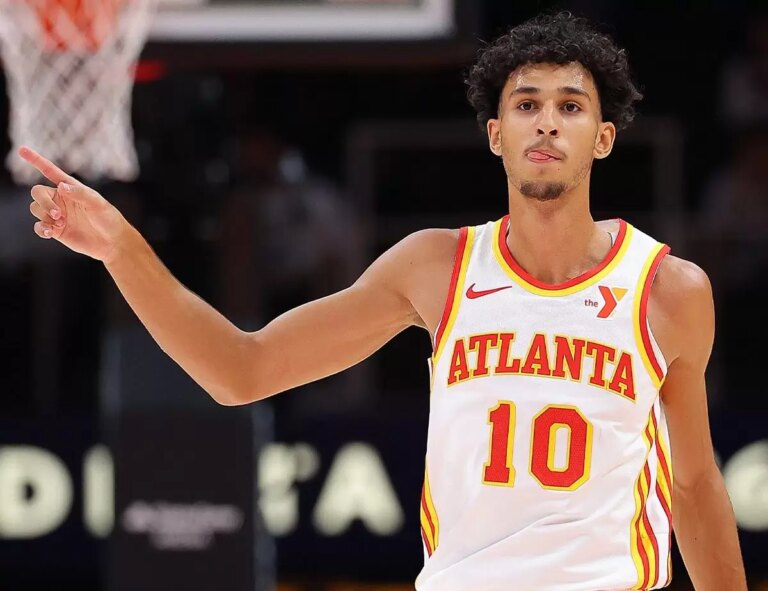
If you look at the Brumbies and Chiefs’ seasons to date, the gap between the two certainly looks bigger than a few inches, but when they are compared side-by-side, it’s clear this semi-final will be won by the smallest of margins.
The Chiefs are the favourites for sure. Home field advantage and a 49- 34 thumping in the same fixture back in March gives them an edge.
Not only does history favour them, but they also welcome back three All Blacks to the starting side: captain Luke Jacobson, inside centre Quinn Tupaea, and wrecking-ball Wallace Sititi at No.8.
The Brumbies, on the other hand, have named an entirely unchanged matchday-23 for the do-or-die fixture, putting their faith in their systems and cohesion.
This confidence in their combinations also speaks to the consistency and planning that has gone into the entire season from Brumbies head coach, Stephen Larkham.
“[C]onditions played a part in tonight’s game. We certainly have a game plan which is suited to wet weather, we’re pretty good at putting a contestable up and chasing it, and putting pressure on that breakdown,” Larkham said after their 39-26 win over the Queensland Reds in round 9.
This mindset is a massive mindset shift from Larkham and his game drivers, and it would be dismissive of their preparation throughout the season to ignore how they’ve tweaked their game plan for each opponent, and this weekend, the tweaks are all about the Chiefs.
The breakdown was the key battleground for the Brums last week against the Hurricanes, and while it will be important against the Chiefs, it will not require the same focus.
The Chiefs don’t have the same number of threats at the breakdown as the Canes; the men from Waikato instead tend to dominate the contact and frustrate sides, forcing them to kick.
This feeds into their attack structures, as the Chiefs and Crusaders are the two sides in the semi-finals to score off kick-returns the most, the Brums cannot afford to be inaccurate with their 22m exits, nor kick in panic.
Once the ball has been retrieved, the Chiefs will take their attack down a 15m channel, and this is where their game plan comes to life, particularly against a side like the Brumbies, who run a rush defence.
The Chiefs attacked the blindside 14.9 per cent of the time across the regular season, only the Blues and the Crusaders attacked it more (15.8 and 17.1 per cent, respectively).
In their quarter-final, the Chiefs struck the blindside on 24 per cent of their plays, the highest of any Super side in the last five years.
This is crucial information for Larkham’s Brumbies as any rush defence defends the player, not the space like a drift defence, so should the Brumbies be caught short on a 15m blindside, the Chiefs will punish them.
The men from Waikato have a plethora of attacking weapons they can unleash to get gainline ball or linebreaks.
The Brumbies notably minimised the rush element of their defence against the Canes last weekend, as it resulted in too many missed tackles and linebreaks in their round 11 game against the Wellington side.
Although it may seem like a good tactic to redeploy this weekend, it would in fact be a grand mistake, because giving an experienced campaigner like Damian McKenzie time is simply not an option.
McKenzie thrives at Super Rugby because there is more time; more time before defences hit you, more time between rucks to survey the options, more time to make decisions.
The worst thing to do is to allow the Chiefs, with McKeznie at the helm, to get settled into their pattern, so the Brums must bring back an aggressive, targeted line speed and contestable kicking game, because giving the Chiefs’ back-three space and time is a sure way to concede points.
This brings us to the next key area, the kicking battle. The forecast says it will be a balmy 14 degrees with almost a 50 per cent chance of rain in Hamilton, kicking will be crucial.
The Brumbies’ competitive boxkicks and up-and-unders undid the Blues in round 4, allowing the men from the bush capital to finally break the Eden Park hoodoo.
On what looks to be a wet night in Waikato, the Brums should avoid playing any rugby in their own half and unless it’s a 22m-exit, the Brums should look to make as many of their kicks contestable.
The Brumbies thrive off set-piece oriented play, a resulting knock-on from a Chiefs’ receiver will allow them to slow the game down and consolidate momentum; however, the Chiefs’ scrum is a step up from the Canes’.
The Chiefs are the premier scrummaging side in the comp, scrummaging at 97.1 per cent compared to the Brumbies’ 96.8 per cent, who sit in second place.
The selection of Allan Alaalatoa once again will give the Brumbies confidence they can at least break even with the minor premiers at scrum time, but he, hooker Billy Pollard, and James Slipper must attempt to make the scrum their own.
It proved a pivotal part of the Brumbies’ game against the Canes, allowing the Brums to alleviate pressure when they were under the cosh and to apply it when they needed to put the Hurricanes to the sword.
It’s unlikely they will enjoy such secure foundations this weekend, but they can still make it a true contest in the wet.
The other set-piece, the lineout, is the Brumbies’ undisputed biggest weapon, having scored 50 tries from possession begun by a lineout this season.
This is nine more than any other team, with a lineout success rate of 89 per cent, territory will be everything for the Brumbies.
This brings us to the third key aspect, where the Brumbies play their rugby will be crucial.
Almost 50 per cent of their 22m entries result in tries; the Chiefs are only slightly less efficient in the 22m, with a strike rate of around 45 per cent.
This must not only be seen as a weapon for the Ponies, but a warning as to how important territory and, in turn, discipline will be.
It’s something Larkham has been hard on this season, and it has put them in good stead, heading into the semi-final being the least penalised side in the competition (7.6 per game), only just ahead of the Chiefs, who concede an average of 8.2.
And this brings us to the final point, the breakdown, the Brums concede some of the highest number of turnovers, surprisingly, but also win more turnovers than the Chiefs in the ruck.
Hence, the Brums cannot afford to get stuck in the melee in their own half and give McKenzie shots at goal, for on a cold, wet night in finals footy, it’s unlikely to be a high-scoring affair; rather, it’s likely to be won and lost off the boot.
Selections across both sides offer juicy matchups: Sititi v Tualima, Finau v Valetini, Lonergan v Ratima, McKenzie v Lolesio, Sevens flyers; Toole v Carter, Stevenson v Wright, Vaa’i v Frost, Tupaea v Feliuai. It is a truly epic match-up to round out the semi-finals weekend.
While the Chiefs are the deadlier side, scoring more points, beating more defenders, and making more line breaks, it’s going to be wet weather footy, and the contest between these two heavyweights will be won upfront, crash-and-bash style.
Larkham and his men should take their season’s planning, preparation, and cohesion into this final with great confidence; man-for-man, they are perhaps out-gunned, but this is a mature side, operating as a well-oiled machine; they have what it takes to break another hoodoo on Saturday night.







